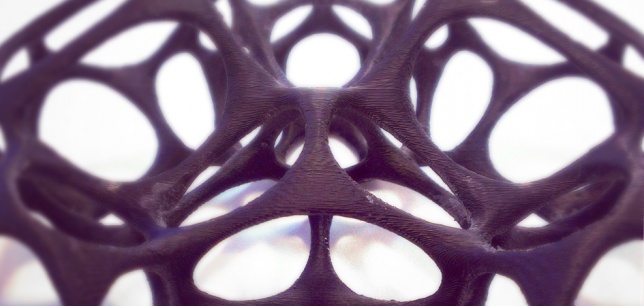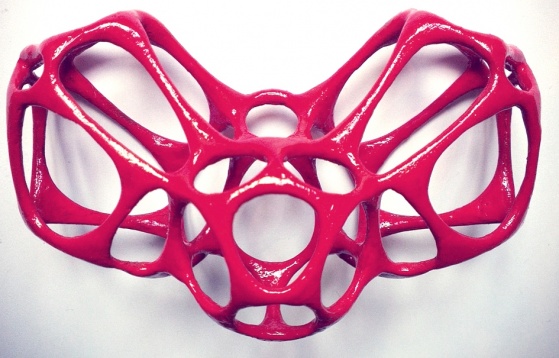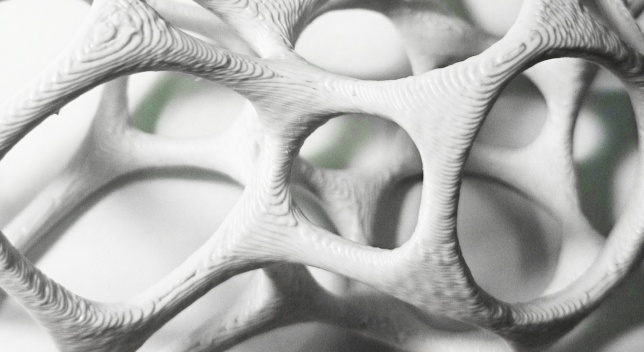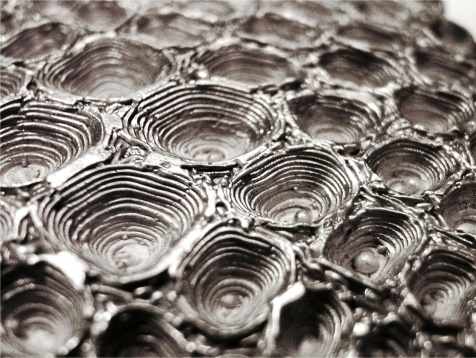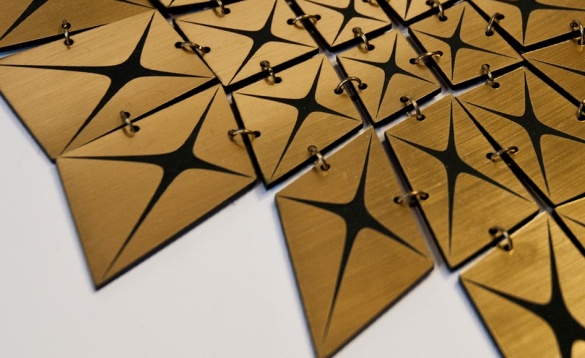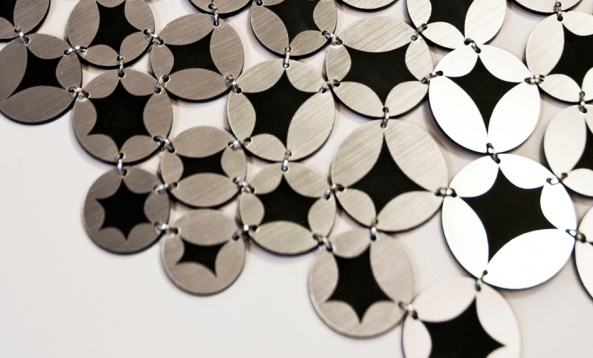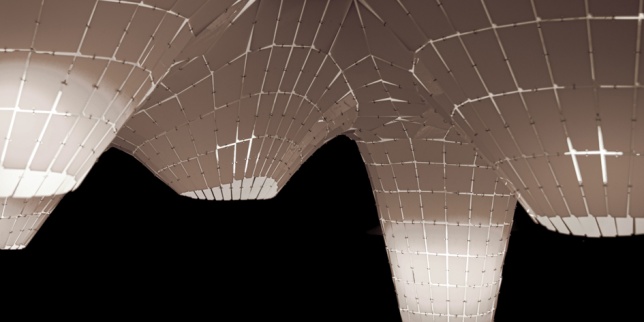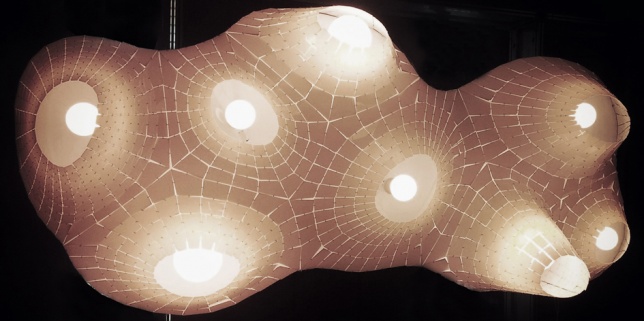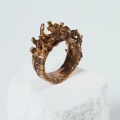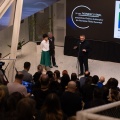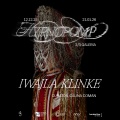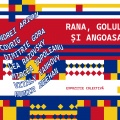HISTORY
idz arhitectură is an emergent architecture and design studio, who’s research and design focuses on the involvement of computation in the creative process and on the use of advanced digital fabrication tools in the making of architectural artifacts. The development of research in the field of computation and digital fabrication is fueled by a united passion of the two studio members, Ionuț Anton and Dana Tănase, and is also doubled by doctoral research. Ionut Anton is an architect and researcher in the field of algorithmic design. He hold a PhD degree in the use of algorithms in architecture and has organized, with Dana Tanase, a series of courses and workshop developing techniques of digital design and fabrication. He is also a lecturer at the University of Architecture and Urban Planning Ion Mincu in Bucharest. Dana Tănase is an architect and researcher in the field of digital fabrication. She is currently developing a PhD on the use of robotic fabrication in architecture. She has tutored and organized, together with IonuțAnton, a series of coursed and workshop focused on the development of digitally designed and fabricated architectural artefacts. She is also a Teaching Assistant at the University of Architecture and Urban Planning Ion Mincu in Bucharest.
SPECIFIC
Their research transcends a new expression of architecture and its dependence on digital tools, and goes further into substance, developing new ways in which we think and make architecture and design using digital tools.They use the latest tools in parametric and algorithmic design to make architectural artefacts, ranging from jewelry, small design objects, interior design and architecture. Their main activities are divided between design, research and education. They design highly functional objects that are devised using complex algorithmic scripts that simulate physical forces and environmental performances.
ROMANIAN DESIGN WEEK APPEARANCES
2015 // The DIGITAL_SILVER jewelry collection
The collection explores how computational design and digital fabrication processes can transform the silver craft. The intention was to preserve a traditional process of casting silver, but to change the method by which the mold is obtained. Thus we used 3D printed models with a lower resolution and more affordable materials. The fabrication comprised two stages; the first was the low-resolution 3D printing with ABS or PLA, and the second the silver casting, which used as molds these 3d printed objects. By using as a mold these 3d printed objects, the layers are more prominent, and we tested how these affect the silver final object. In our process, the layers that remain visible on the resulted object and reveal the process by which it was made.
2014 // GEOMETRY SOFT collection
The collection explores complex models, which start from a rigid and standard geometry, which is transformed and adapted in the creative process to become soft. Therefor the geometry folds onto each imagined scenario to become each time a different form, a family of similar but unique shapes.
idz arhitectură is an emergent architecture and design studio, who’s research and design focuses on the involvement of computation in the creative process and on the use of advanced digital fabrication tools in the making of architectural artifacts. The development of research in the field of computation and digital fabrication is fueled by a united passion of the two studio members, Ionuț Anton and Dana Tănase, and is also doubled by doctoral research. Ionut Anton is an architect and researcher in the field of algorithmic design. He hold a PhD degree in the use of algorithms in architecture and has organized, with Dana Tanase, a series of courses and workshop developing techniques of digital design and fabrication. He is also a lecturer at the University of Architecture and Urban Planning Ion Mincu in Bucharest. Dana Tănase is an architect and researcher in the field of digital fabrication. She is currently developing a PhD on the use of robotic fabrication in architecture. She has tutored and organized, together with IonuțAnton, a series of coursed and workshop focused on the development of digitally designed and fabricated architectural artefacts. She is also a Teaching Assistant at the University of Architecture and Urban Planning Ion Mincu in Bucharest.
SPECIFIC
Their research transcends a new expression of architecture and its dependence on digital tools, and goes further into substance, developing new ways in which we think and make architecture and design using digital tools.They use the latest tools in parametric and algorithmic design to make architectural artefacts, ranging from jewelry, small design objects, interior design and architecture. Their main activities are divided between design, research and education. They design highly functional objects that are devised using complex algorithmic scripts that simulate physical forces and environmental performances.
ROMANIAN DESIGN WEEK APPEARANCES
2015 // The DIGITAL_SILVER jewelry collection
The collection explores how computational design and digital fabrication processes can transform the silver craft. The intention was to preserve a traditional process of casting silver, but to change the method by which the mold is obtained. Thus we used 3D printed models with a lower resolution and more affordable materials. The fabrication comprised two stages; the first was the low-resolution 3D printing with ABS or PLA, and the second the silver casting, which used as molds these 3d printed objects. By using as a mold these 3d printed objects, the layers are more prominent, and we tested how these affect the silver final object. In our process, the layers that remain visible on the resulted object and reveal the process by which it was made.
2015 // The CELL_AGGREGATION jewelry collection
The collection intention was to discover generation methods that evolve from the surface subdivision, towards volume strategies, in this case cellular aggregation. The design process followed different methods of expressing these aggregation structures, exploring the relationship between negative and positive. Also, the project explored the cell geometry, which tests principles of deforming regular polyhedra, which lose their symmetry character, but keep their geometric relations. By deforming stable geometric structures we are obtaining a familiar image, but altered. In this design process the focus is on topological deformation and on relations between elements.The design project explores means of articulating the cells in order to obtain heterogeneous structures that expressed the generation rules. The resulted objects oscillates between random and ordered, between massiveness and fluidity. Characteristics related to materiality motivated the geometric transformations and are strongly influenced by the fabrication method; the collection is materialized through 3d printing.
The collection intention was to discover generation methods that evolve from the surface subdivision, towards volume strategies, in this case cellular aggregation. The design process followed different methods of expressing these aggregation structures, exploring the relationship between negative and positive. Also, the project explored the cell geometry, which tests principles of deforming regular polyhedra, which lose their symmetry character, but keep their geometric relations. By deforming stable geometric structures we are obtaining a familiar image, but altered. In this design process the focus is on topological deformation and on relations between elements.The design project explores means of articulating the cells in order to obtain heterogeneous structures that expressed the generation rules. The resulted objects oscillates between random and ordered, between massiveness and fluidity. Characteristics related to materiality motivated the geometric transformations and are strongly influenced by the fabrication method; the collection is materialized through 3d printing.
The collection explores complex models, which start from a rigid and standard geometry, which is transformed and adapted in the creative process to become soft. Therefor the geometry folds onto each imagined scenario to become each time a different form, a family of similar but unique shapes.
Inspired by traditional romanian crafts, towards primary geometric patterns that interwine and form complex surfaces. Fascinated by the subtle transition of a underlying form into something else, and by the way in which one lement ceases beeing what it was and becomes anew. Reaching towards long forgotten crafts and redefining the meaning in todays society. Tools have changed, bacem digital, but must not lose their past craftsmaship and elegance. Infused by a form that is sought after, not given, the kind that emerges in a form finding process of Gaudi or Frei Otto’s hanging chains.
2014 // QUAD_LIGHT
The lamp is developed using digital tools, whose geometry and concept are born from the creative interaction between architects and the computational environment. Its shape is not imposed, it is searched for, and it is each time different, adapting to every users personal needs.
2014 // QUAD_LIGHT
The lamp is developed using digital tools, whose geometry and concept are born from the creative interaction between architects and the computational environment. Its shape is not imposed, it is searched for, and it is each time different, adapting to every users personal needs.
The computational environment is used both as generator, and for the performance analysis and simulation of physical forces that act upon the geometry. Modeled using advanced digital tools to simulate gravity and dynamic relaxation, QUAD_LIGHT had a fluid shape that is made up from quad subdivisions. Using the plugins for visual programming Grasshopper and Kangaroo for Rhinoceros, we managed to control the overall form and have a digital continuous workflow from concept design to fabrication. The resulting shape of each QUAD_LIGHT is developed so that once assembled it will hang gravitationally and take the shape of the digital model. Using parametric design software and using an algorithm for design allows the customization of the form for each user and the generation of the fabrication information for each component. The algorithm allows the direct transfer of the information in the digital model to numerical controlled machines for the production of each individual component. Each component is laser cut out of plastic flat sheets to its own geometry and are then manually assembled, therefore combining craftsmanship with the digital production.
















